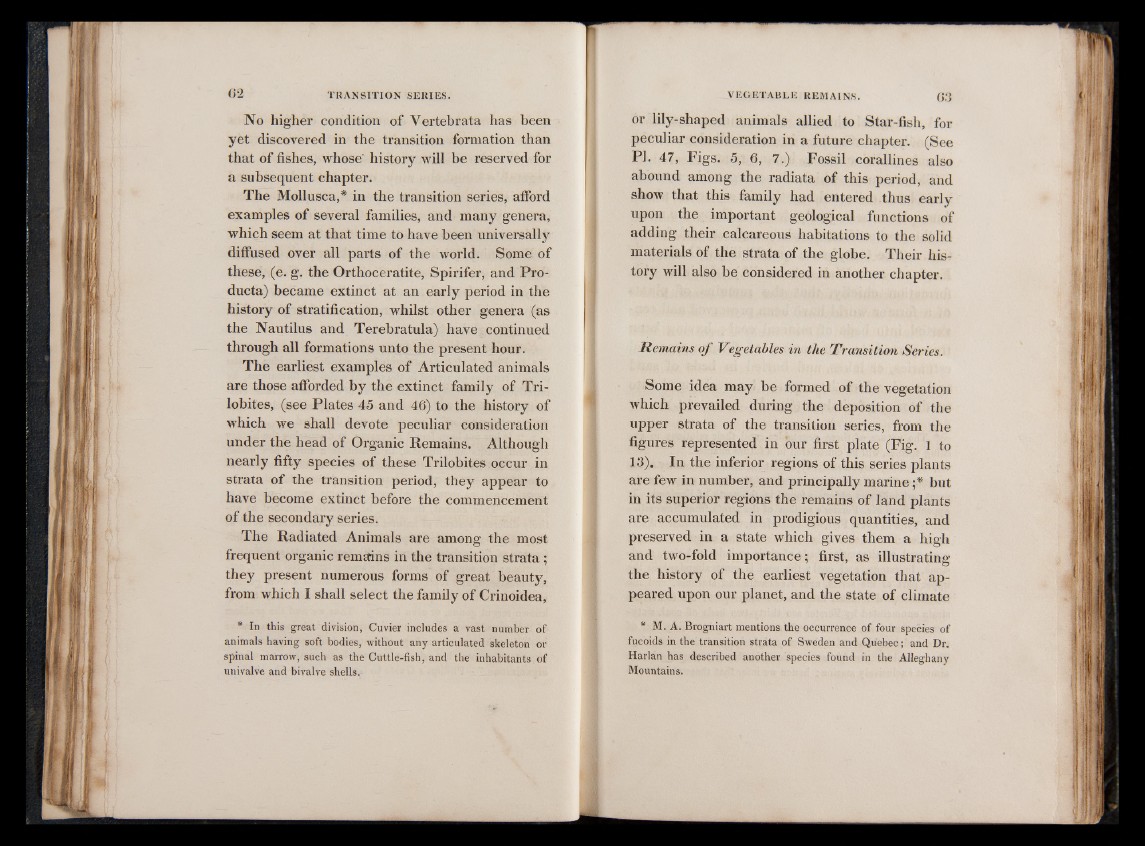
No higher condition of Vertebrata has been
yet discovered in the transition formation than
that of fishes, whose' history will be reserved for
a subsequent chapter.
The Mollusca,* in the transition series, afford
examples of several families, and many genera,
which seem at that time to have been universally
diffused over all parts of the world. Some of
these, (e. g. the Orthoceratite, Spirifer, and Pro-
ducta) became extinct at an early period in the
history of stratification, whilst other genera (as
the Nautilus and Terebratula) have continued
through all formations unto the present hour.
The earliest examples of Articulated animals
are those afforded by the extinct family of Tri-
lobites, (see Plates 45 and 46) to the history of
which we shall devote peculiar consideration
under the head of Organic Remains. Although
nearly fifty species of these Trilobites occur in
strata of the transition period, they appear to
have become extinct before the commencement
of the secondary series.
The Radiated Animals are among the most
frequent organic remains in the transition strata;
they present numerous forms of great beauty,
from which I shall select the family of Crinoidea,
* In this great division, Cuvier includes a vast number of
animals having soft bodies, without any articulated skeleton or
spinal marrow, such as the Cuttle-fish, and the inhabitants of
univalve and bivalve shells.
or lily-shaped animals allied to Star-fish, for
peculiar consideration in a future chapter. (See
PI. 47, Figs. 5, 6 , 7.) Fossil corallines also
abound among the radiata of this period, and
show that this family had entered thus early
upon the important geological functions of
adding their calcareous habitations to the solid
materials of the strata of the globe. Their history
will also be considered in another chapter.
Remains o f Vegetables in the Transition Series.
Some idea may be formed of the vegetation
which prevailed during the deposition of the
upper strata of the transition series, from the
figures represented in bur first plate (Fig. 1 to
13). In the inferior regions of this series plants
are few in number, and principally marine ;* but
in its superior regions the remains of land plants
are accumulated in prodigious quantities, and
preserved in a state which gives them a high
and two-fold importance; first, as illustrating
the history of the earliest vegetation that appeared
upon our planet, and the state of climate
* M. A. Brogniart mentions the occurrence of four species of
fucoids in the transition strata of Sweden and Quebec; and Dr.
Harlan has described another species found in the Alleghany
Mountains.